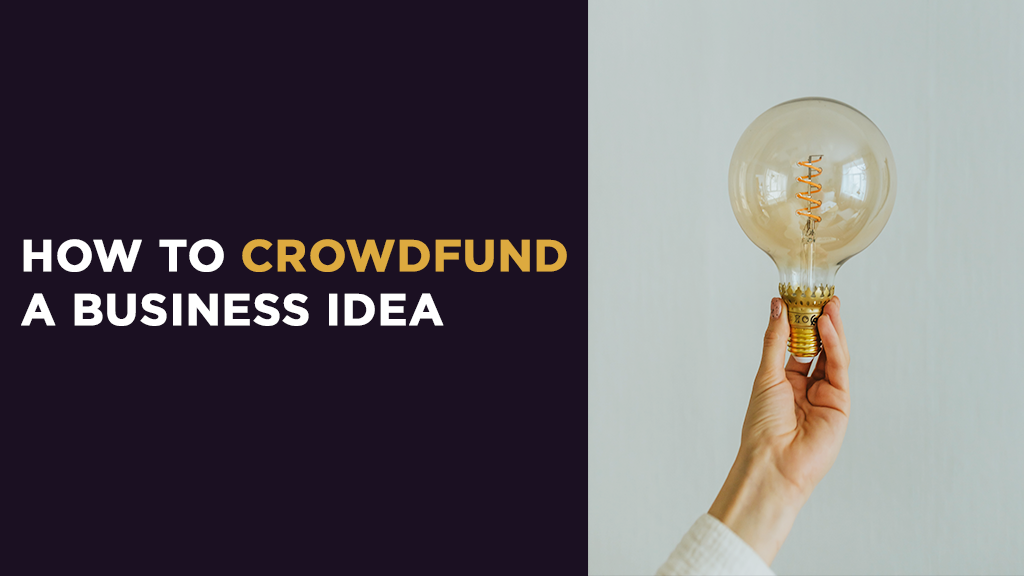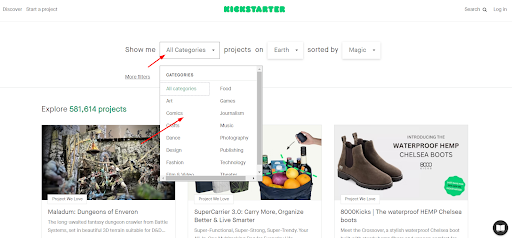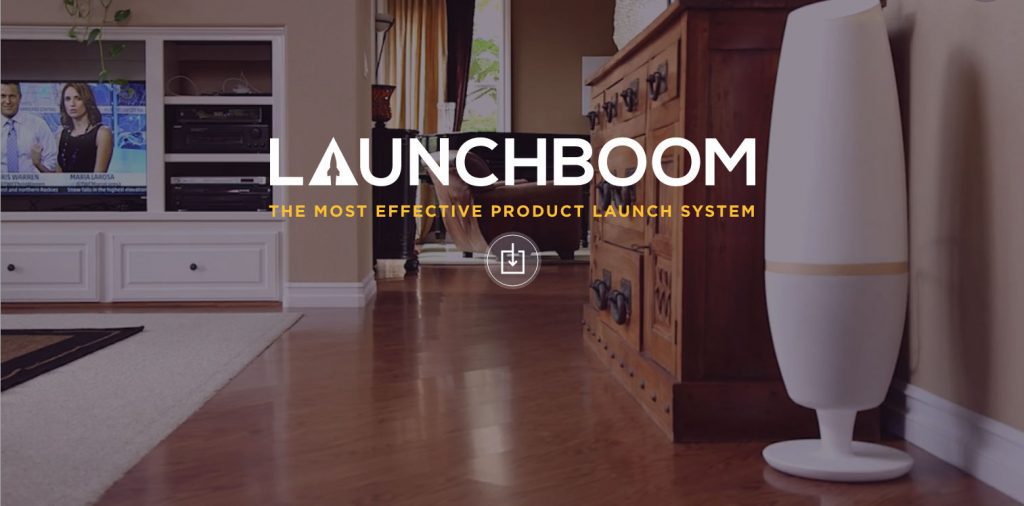
In the past, getting the funding needed to start a business meant jumping through endless hoops and pitching your ideas to investors.
But while facing a panel of investors can be intimidating, convincing a crowd of strangers to invest in your business idea might sound even more daunting.
However, with the right strategies and partnerships with experts, getting the funding you need to turn your dreams into a reality is easier than ever.
Contents
Key Takeaways
- Clearly define your business positioning and identify the problem you’re solving for your target audience.
- Select a crowdfunding platform that aligns with your goals and target audience.
- Build a prelaunch email list using a Reservation Funnel.
- Promote your campaign using a combination of paid advertising, influencer marketing, PR, and social media to attract potential backers.
Here’s how to crowdfund successfully:
1. Figure Out Your Business Positioning
Successfully crowdfunding a business idea is not an easy feat. It requires careful planning, a solid strategy, and a clear understanding of your business positioning.
Ask yourself these questions:
What Problem Are You Solving?
This is the foundation upon which you will build your pitch and attract potential backers.
To identify the problem you’re solving, start by thinking about your target audience and their pain points.
- What challenges are they facing that your product can help solve?
- What needs do they have that your product or service can fulfill?
So, will the business idea you’re crowdfunding solve a problem that your target audience is willing to pay for?
Who Are You Solving It For?
You have an innovative idea about a line of sustainable fashion made entirely from recycled materials.
You’ve identified the problem you’re solving — the fashion industry’s environmental impact, but within this niche there are several factors that could determine who your target audience is. Is it environmentally conscious consumers who are looking for affordable fashion options? Or is it fashion-forward individuals who are interested in supporting innovative and eco-friendly businesses?
To determine who your audience is and how your product will specifically appeal to them, you’ll need to conduct some market research.
2. Conduct Market Research
Market research will help you better understand your target audience and competitors and identify opportunities for differentiation and positioning.
Here’s what to do when conducting market research for your crowdfunding campaign:
Define your target audience – Who are you trying to reach with your crowdfunding campaign? What are their demographic characteristics, interests, and behaviors?
Analyze your competitors – Who else is offering a solution to the problem you’re solving? What are their strengths and weaknesses? How much capital have they raised? Go to a platform like Kickstarter, filter the projects by category, and study the top projects in your category.

Photo Courtesy of Kickstarter
Determine the demand for your solution – Is there a market for your product or service? How many people are interested in your solution? What is the potential size of your target market? Use tools like Meta Ads and the analytics tools they provide to get data and insights into markets.
When you conduct thorough market research, you’ll be better equipped to create a successful crowdfunding campaign that resonates with your target audience and sets you apart from the competition.
3. Choose a Crowdfunding Platform
When it comes to platforms we always recommend you go with the top two, Kickstarter and Indiegogo.
Both of these platforms use a rewards-based crowdfunding model and have the largest communities to pitch your project to.
Quite simply, Kickstarter and Indiegogo have a track record of success, and between those two you can determine which is right for you by exploring the types of projects that have the most success on each platform. Kickstarter’s top three categories are gaming, books, and music/film/arts. Indiegogo on the other hand sees the most success in tech-based ideas, particularly e-bikes, as well as lodging, glamping, and hotels.
Other popular crowdfunding platforms include:
- GoFundMe – This platform allows individuals and organizations to raise money for personal or social causes, such as medical expenses, education, or disaster relief. So it’s often a better choice if your project is a charitable cause rather than a business.
- Patreon – This crowdfunding platform is perfect for creators, such as artists, musicians, writers, or any other person that requires ongoing support from their fans in exchange for exclusive content and rewards.
- Crowdfunder – Connects startups and early-stage businesses with accredited investors. It offers many services, including due diligence, legal support, and investor relations.
4. Build a Prelaunch Email List
A prelaunch email list allows you to generate buzz and excitement before the launch and ensures that you have a group of potential backers interested in your project.
Here are some top-notch tips on how to build an email list:
- Offer a valuable incentive – People are more likely to give you their email address if they receive something of value in return. This can be a free eBook, a discount code, or exclusive content.
- Use opt-in forms on your website – Make it easy for visitors to sign up for your email list by using opt-in forms on key pages.
- Leverage social media – Use social media to promote your email list and encourage people to sign up. This can include running ads, creating social media posts, and engaging with your followers.
- Host a webinar or event – Offer valuable content and encourage attendees to sign up for your email list for future updates.
Use a Reservation Funnel
Think of your crowdfunding campaign like a hot new club that’s not open yet. The goal is to create anticipation that leaves people eager to join the party as soon as the doors open.
So, what do you do? You create a Reservation Funnel — a virtual velvet rope that lets people reserve their spot in line before the party even starts.
Here’s how it works. You create a landing page that showcases your project and offers an incentive for people to join your prelaunch email list. This could be anything from exclusive access to your product or a discount on their first purchase.
By offering this incentive, you’re enticing people to sign up and join your exclusive VIP list. And let’s face it; everyone loves feeling like a VIP, right?
Once people have signed up, you can use email marketing to keep them engaged and excited about your project. Share updates, sneak peeks, and insider info to keep them interested and build anticipation for the big launch.
“Simply put, reservations are 30x more likely to purchase when we launch than non-reservations.”
—LaunchBoom
That’s right. By creating a sense of exclusivity and building excitement before your crowdfunding campaign even starts, you’re setting yourself up for success.
Early Funding Gives You Compound Benefits
Early funding gives you multiple benefits. The algorithms used by crowdfunding platforms prioritize campaigns that generate a lot of traffic.
As more people back your campaign and share it with their networks, it will begin to rise in the platform’s rankings, making it more visible to potential backers.
This increased visibility leads to even more traffic and funding, creating a positive feedback loop that can help your campaign reach its funding goal and beyond.
6. Promote Your Campaign
Should you pay for ads or pay influencers? It would be ideal to have your mailing list do most of the heavy lifting when it comes to getting your campaign funded. But if you’re not a well-known name in your niche, you’ll need to promote your product and borrow some notoriety from influencers to get more eyes on your campaign.
There are a few different ways to promote your campaign:
Paid Advertising
Platforms like Facebook and Google Ads allow you to target specific demographics and interests. Your ads are therefore seen by people who are most likely to be interested in your product or service.
However, paid advertising can also be expensive, and there’s no guarantee of a successful campaign. It’s important to set a budget and track your return on investment (ROI) to ensure you get a positive ROI from your advertising efforts.
Influencer Marketing
Partner with influencers who have large followings on social media.
When choosing influencers to work with, find those with a strong following in your target demographic. Also, consider the cost of working with influencers, as some may charge high fees for their services.
Press
Research journalists and bloggers who cover your industry. Take the time to identify those who write about your industry or niche, and reach out to them.
Hire a PR Agency
PR agencies have a wealth of experience pitching stories to journalists and securing press coverage in various media outlets. They can help you craft a compelling story around your campaign and develop a messaging strategy that resonates with your target audience.
However, unlike paid advertising, where you can directly measure clicks and conversions, the impact of PR can be more difficult to quantify.
Track metrics like website traffic, social media engagement, and press mentions helping you understand the effectiveness of your PR efforts and make informed decisions about future campaigns.
7. Fulfill Your Promises
Once your campaign has ended, and you’ve raised the funds you need to start your business, it’s time to fulfill your promises to your backers. This means delivering the product or service you promised within the specified timeframe.
Make sure to communicate with your backers throughout the fulfillment process to keep them informed of your progress and address any concerns or issues. You should also be transparent about any challenges or delays that you encounter along the way.
Fulfilling your promises to your backers helps you build trust and credibility with your customers. Satisfied customers are more likely to recommend your business to others and become repeat customers.
Power up Your Crowdfunding Success
Whether you’re just getting started with crowdfunding or a seasoned pro, approach your campaign with a solid plan and a willingness to adapt and learn.
To make your journey smooth, consider partnering with experts in the industry. At LaunchBoom, we can help you achieve your funding goals and take your project to new heights.
However, before hiring a crowdfunding agency, it’s important to consider the pros and cons. Check out our blog post on why most people should not hire a crowdfunding agency.




